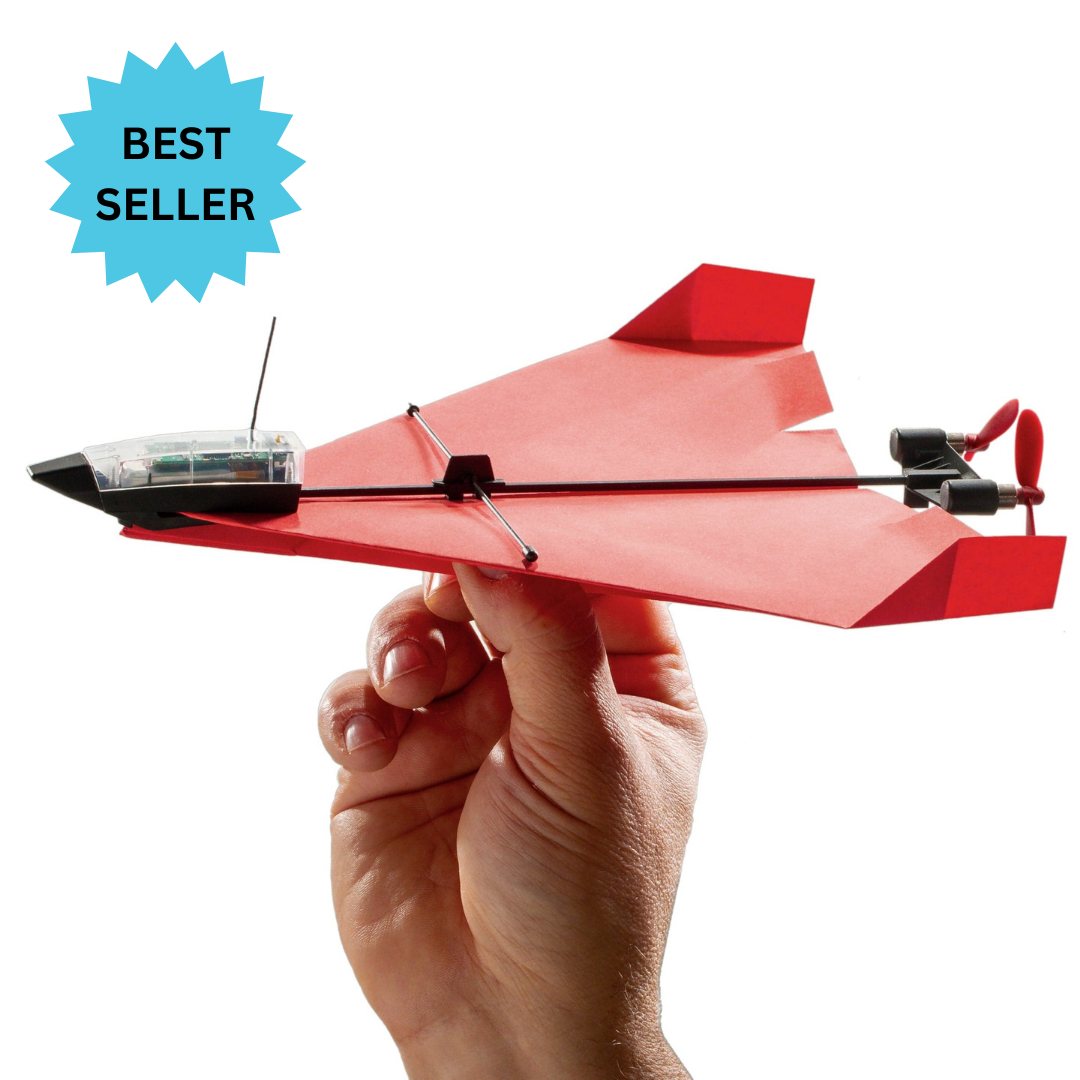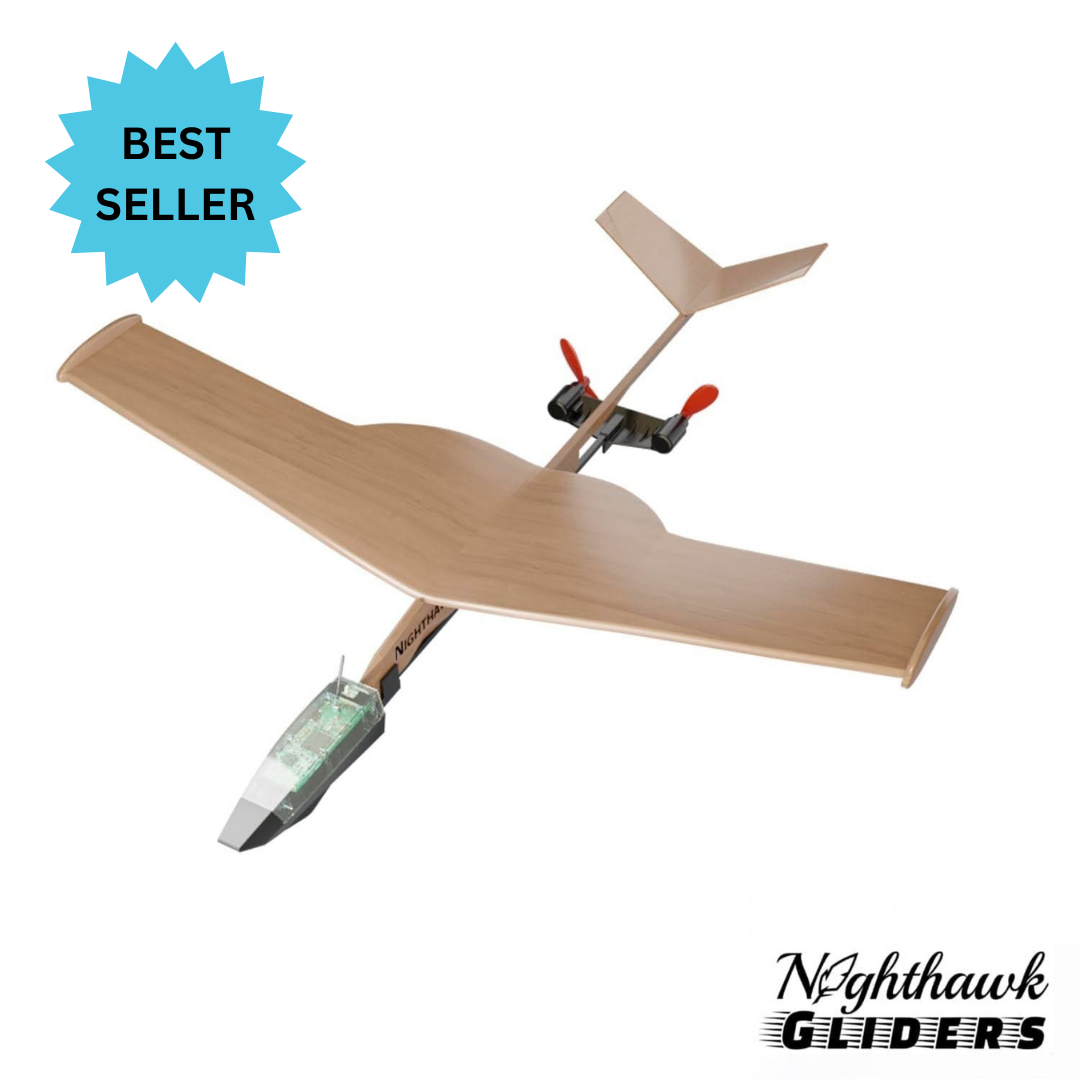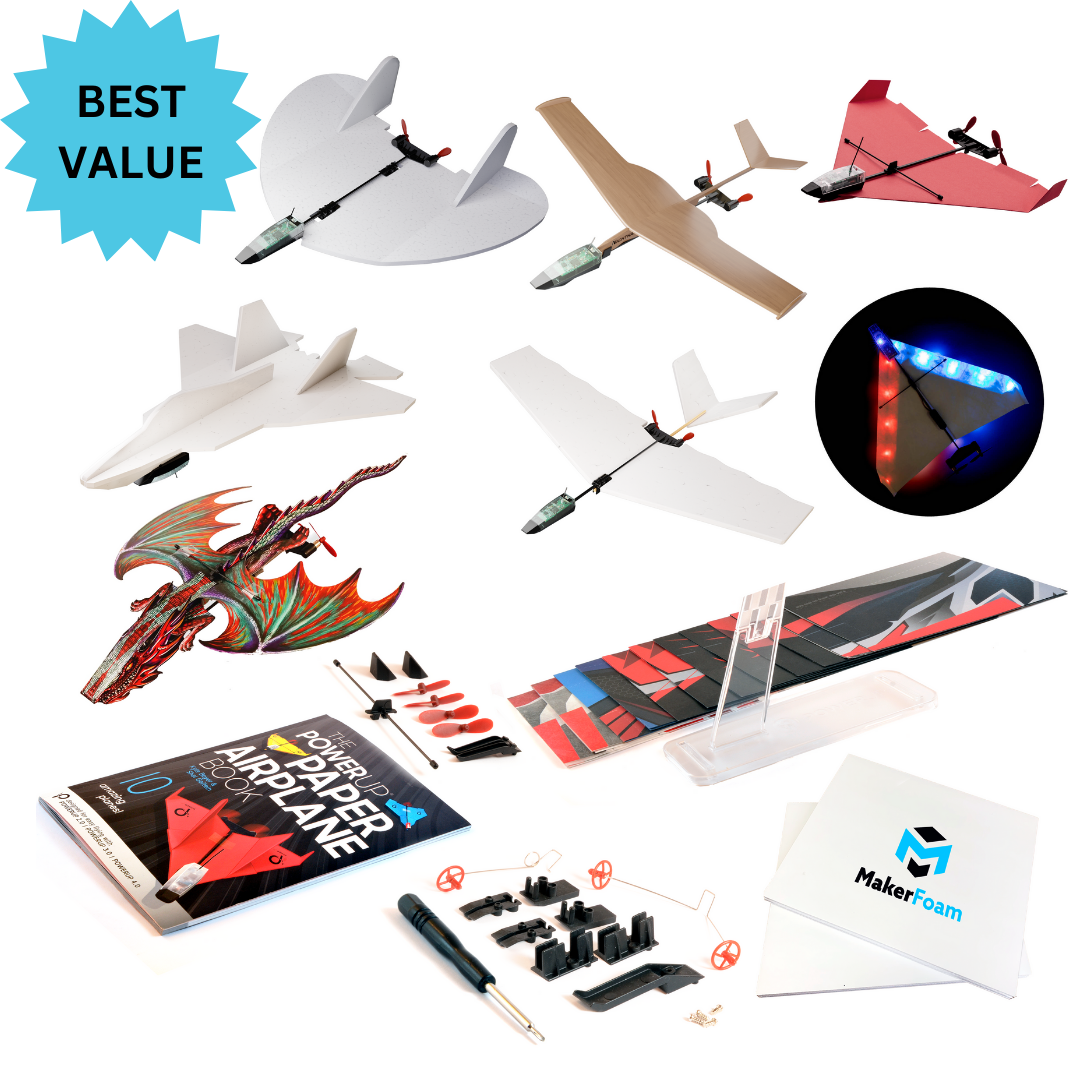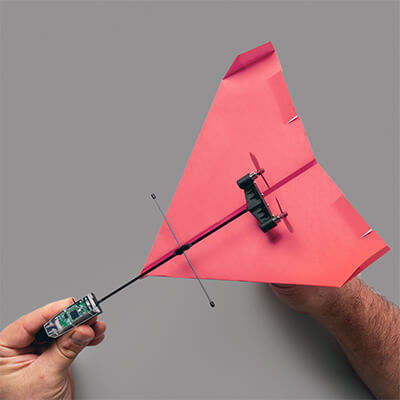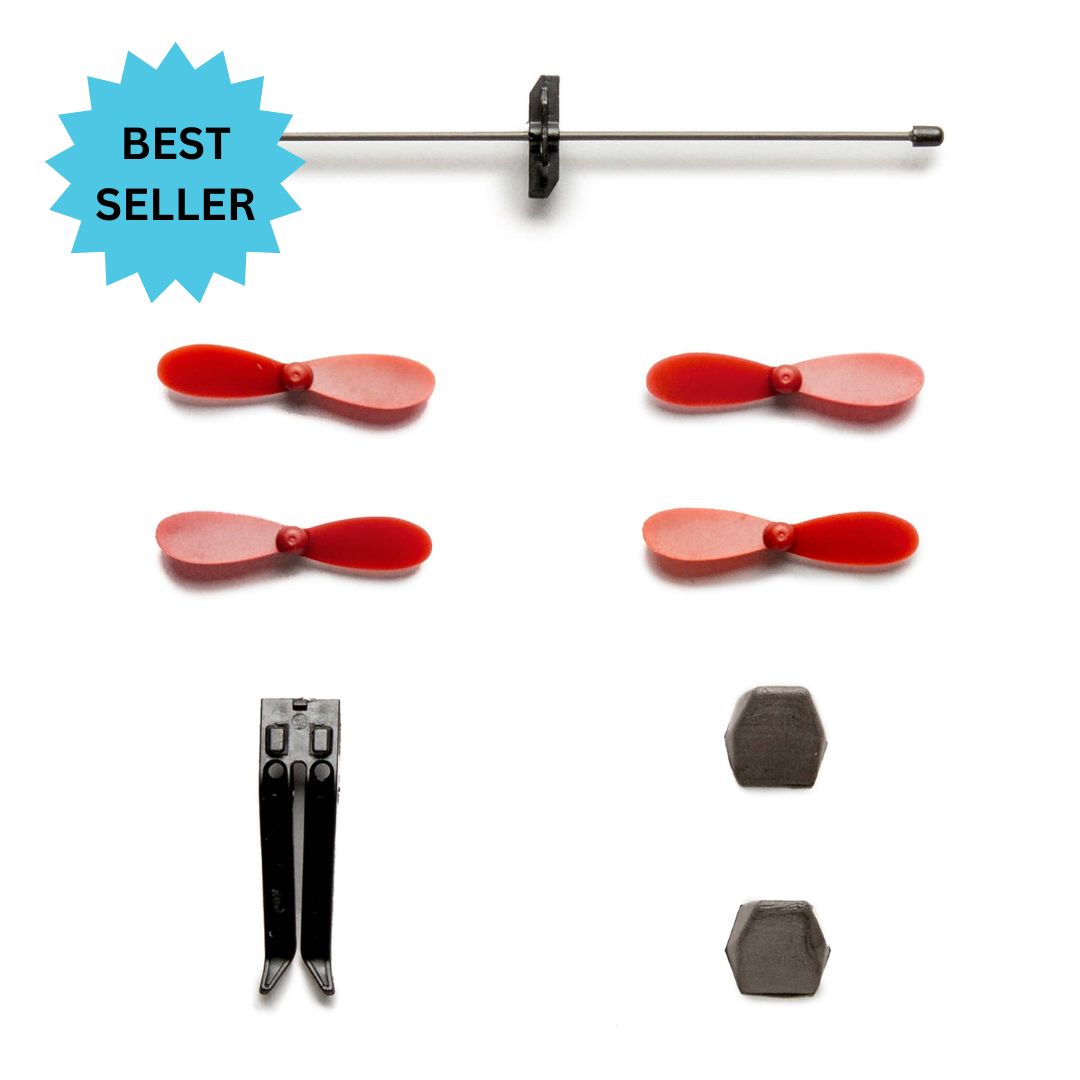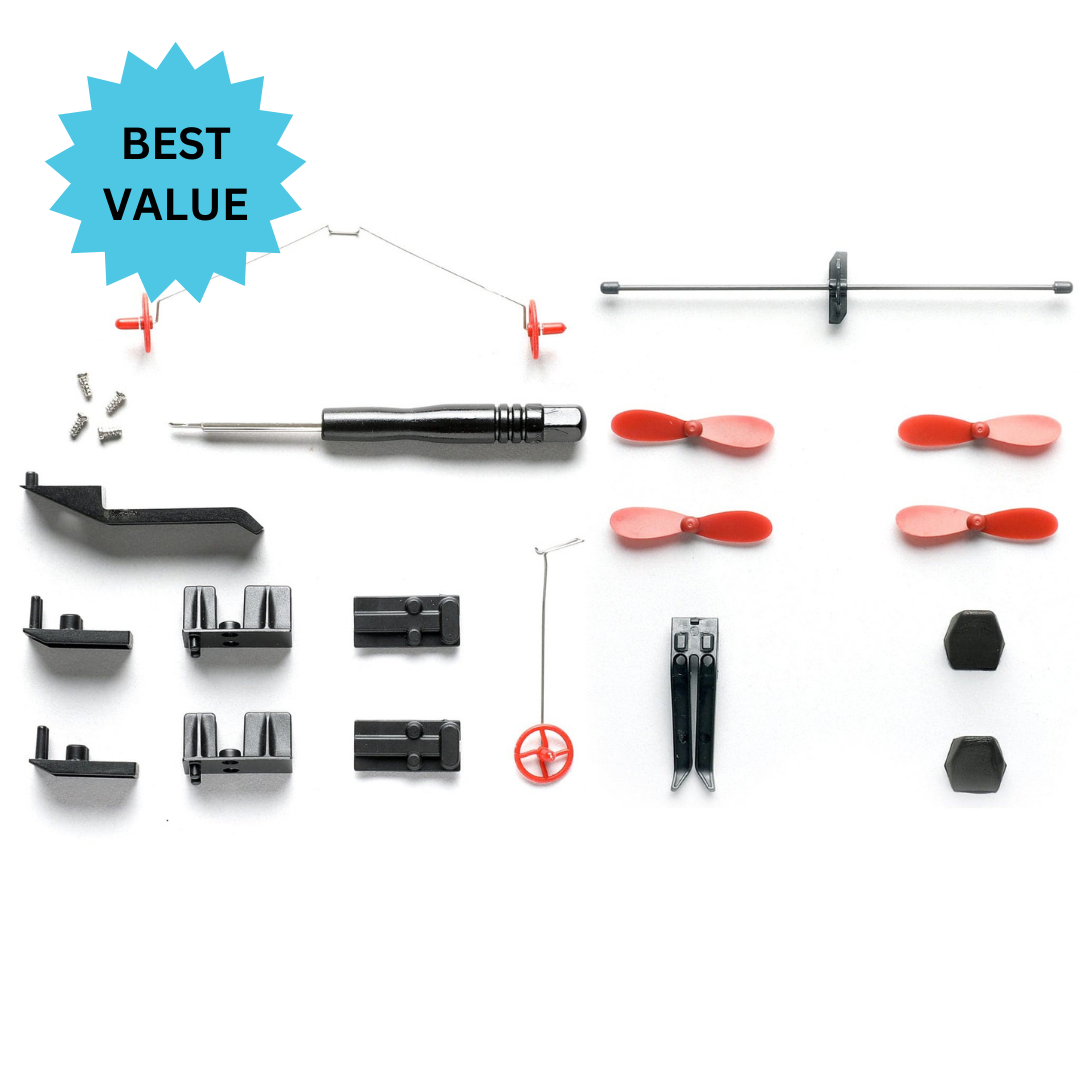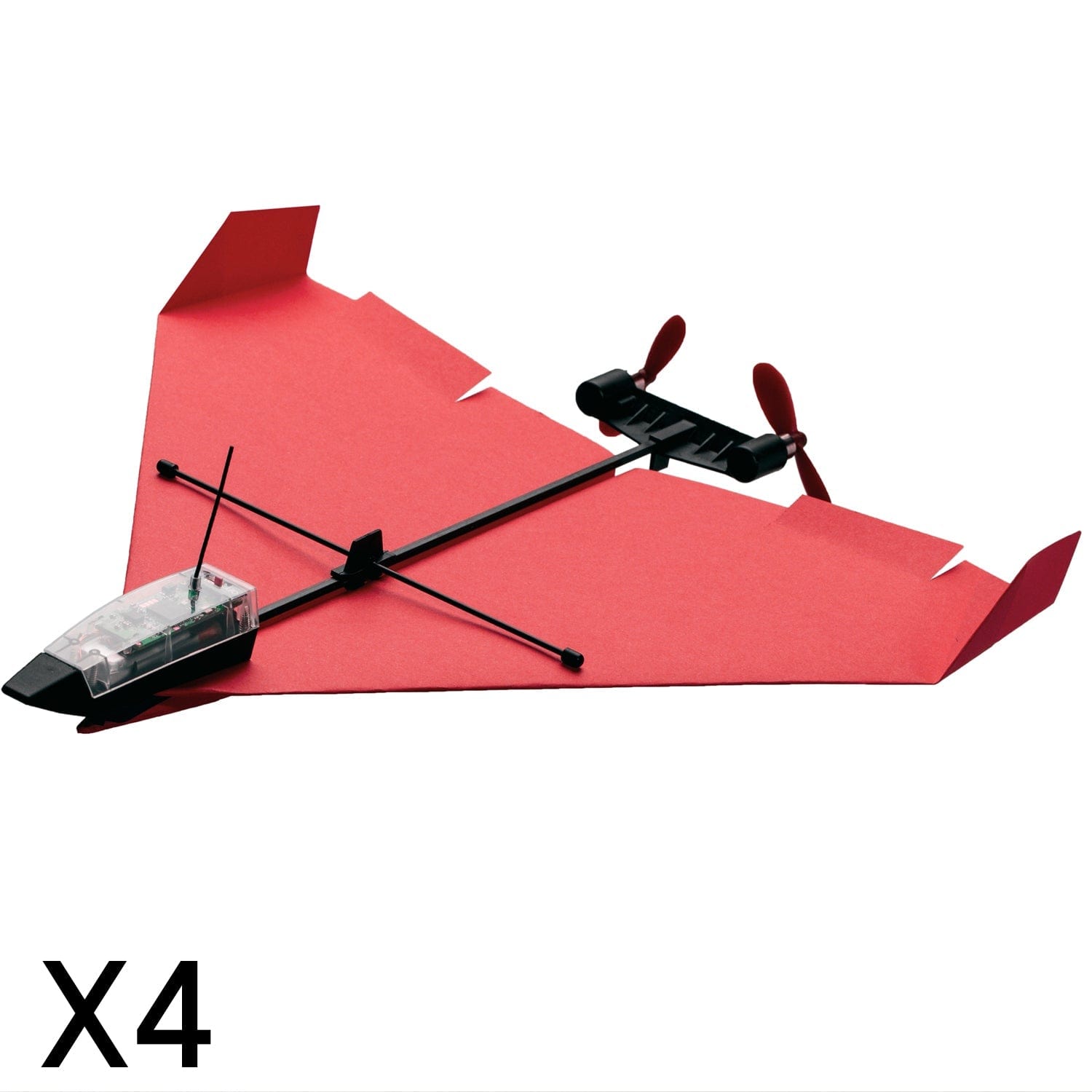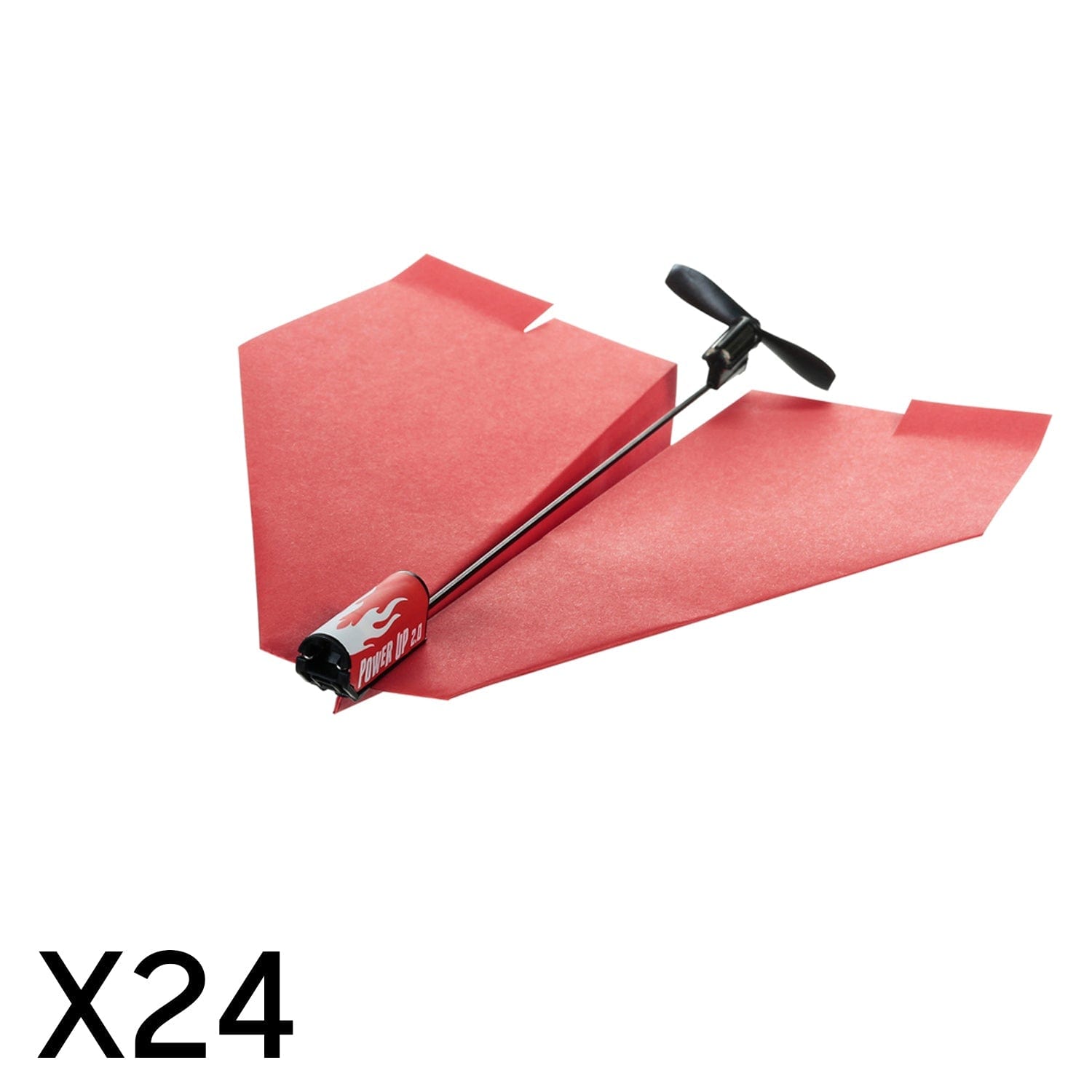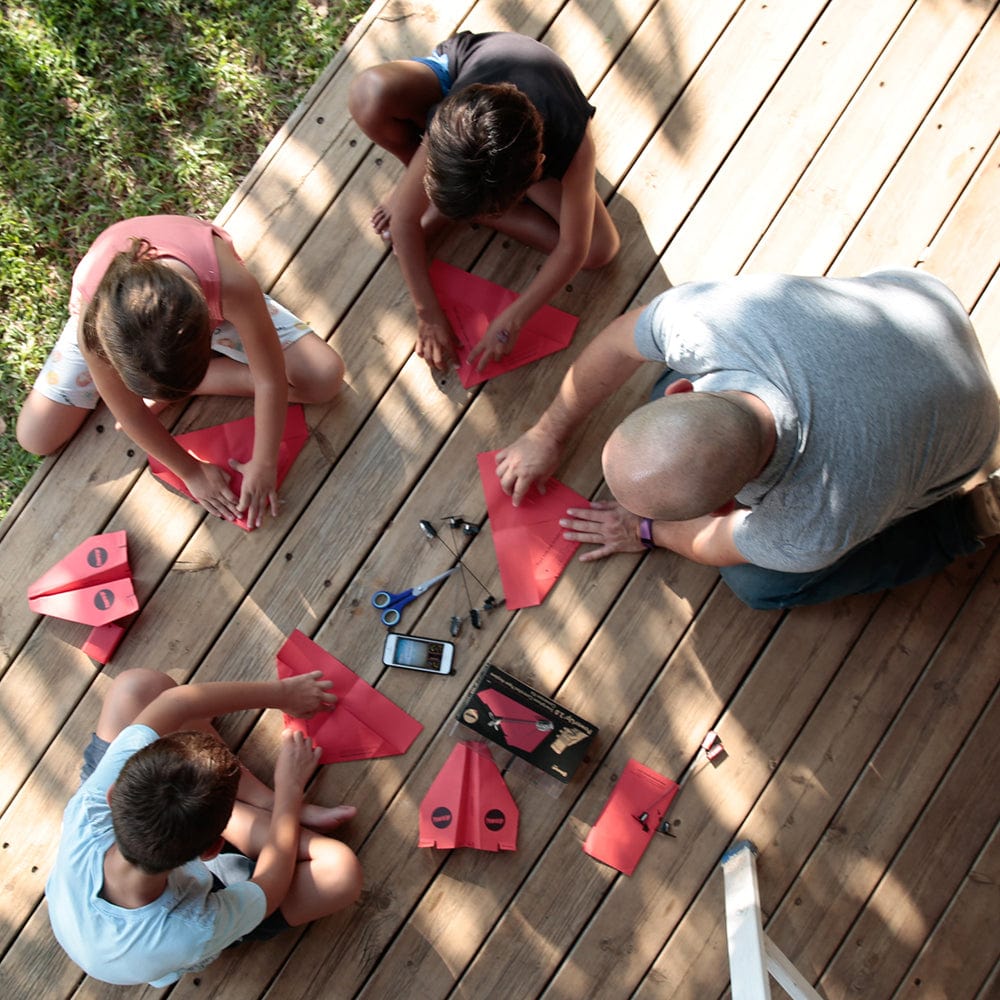FREE SHIPPING WW ON ORDERS OVER $99 USD
FREE SHIPPING WW ON ORDERS OVER $99 USD
PLANES
BUNDLES
ACCESSORIES
EDUCATORS
The World’s Longest Paper Airplane Flight: How to Break a Record
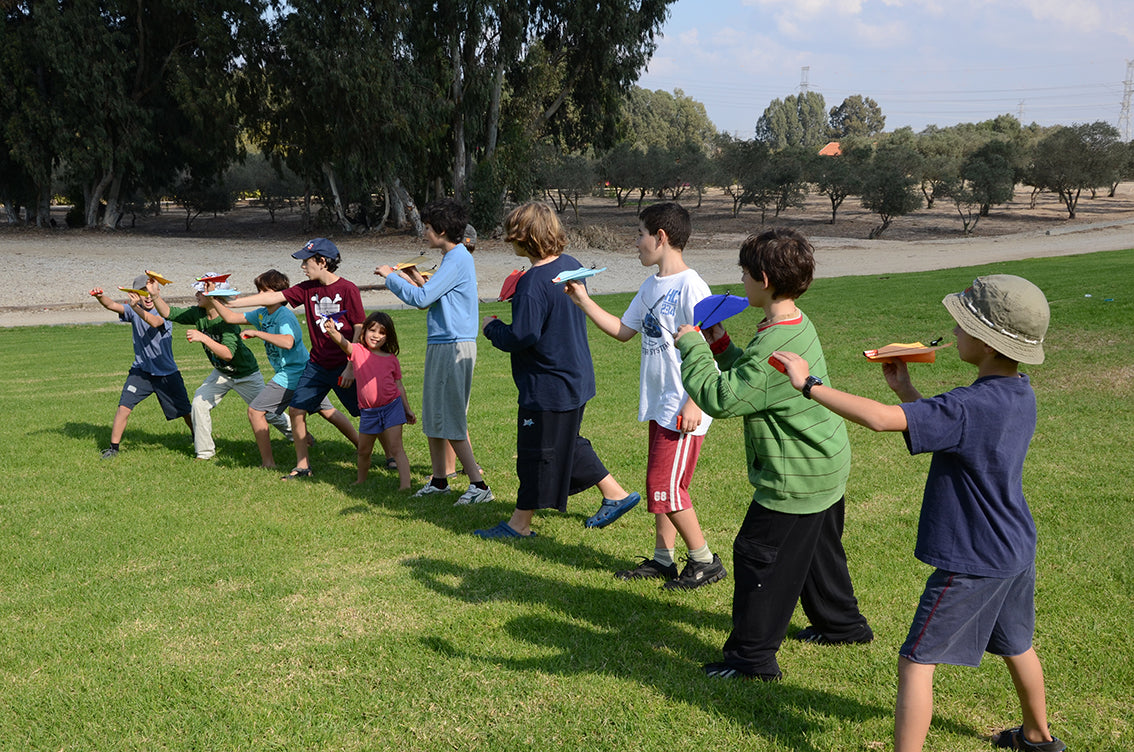
The World’s Longest Paper Airplane Flight: How to Break a Record
Are you ready to make history? Imagine folding a simple piece of paper, tossing it into the air, and watching it soar further than any paper airplane has ever gone before. It sounds like a dream, right? But for those who dare to break records, that dream is closer to reality than you might think.
In this blog, we’re diving into the world of paper airplane record-breaking and showing you how to break the record for the longest paper airplane flight—a feat that requires more than just a good throw. Let's explore the record, the science behind it, and the best strategies to set a new world record
The Current Record: How Far Can a Paper Airplane Fly?
As of now, the official Guinness World Record for the longest paper airplane flight stands at an astonishing 69.14 meters (226 feet, 10 inches). This mind-blowing achievement was set by, a Japanese paper airplane enthusiast, in 2010 at the University of Tokyo. Toda’s plane flew more than the length of a football field!

But before you start folding, let’s take a moment to reflect on the sheer skill and science that went into that flight. Breaking this record requires precision, design expertise, and a strong understanding of aerodynamics.
Step 1: The Perfect Paper Airplane Design
You can't just fold any old paper airplane and expect it to fly the distance. The design you choose is critical to the success of your flight. Here are a few key design considerations for a world-record paper airplane:
The Right Paper
The type of paper you use plays a huge role in the performance of your plane. Most record-breaking airplanes are made from **standard printer paper (8.5 x 11 inches)**, but the weight and thickness of the paper matter. Too heavy and the plane will struggle to stay airborne; too light and it may not fly far enough.
The general consensus among record-breakers is to use **80 gsm (grams per square meter)** paper, which is the standard weight of most printer paper. A thicker paper may create a sturdier plane, but it can also slow it down. Experiment with different types of paper to find the perfect balance between durability and flight efficiency.
Aerodynamic Designs
The design of your paper airplane should focus on maximizing lift while minimizing drag. The most effective designs are sleek and symmetrical to ensure stability during flight. One of the most popular designs for long-distance paper airplanes is the “dart” style. It has a narrow, sharp nose and long, straight wings that reduce drag and allow the plane to glide smoothly.

However, don’t be afraid to experiment with variations! Some long-distance airplanes incorporate **wings with slight dihedral angles** (the upward bend at the tips) to improve stability.
Key Design Features to Focus On:
- Sharp nose: A pointed tip reduces air resistance.
- Wide wings: A greater surface area helps maintain lift.
- Symmetry: Ensure both wings are folded the same way to avoid wobbling mid-flight.
- Folding accuracy: Precision is key—small imperfections can drastically affect flight.
Step 2: Mastering the Throw
It’s not just about the plane you build; it’s about how you throw it. The throw is crucial to achieving a record-breaking distance. The best technique is to aim for a smooth, controlled release with an emphasis on gliding rather than power. Here’s how to get it right:
Throwing Technique
- Angle of Release: Aim to release your paper airplane at a slight upward angle, around 10-15 degrees. Too high and the plane will stall; too low and it won’t achieve maximum lift.
- Smooth Release: Don’t toss your plane like a baseball! A smooth, steady throw allows the plane to maintain stable flight. Use your wrist and forearm for control, not just your arm strength.
- Speed and Force: A gentle but firm push is key. Too much force could make the plane dive straight down. Too little force, and it won’t gain the necessary speed to cover long distances.
Grip and Control
Gripping the plane correctly can make all the difference. Hold the plane lightly at the center, near where the wings meet the body, and avoid squeezing the wings too tightly. A relaxed grip will allow for a more controlled release, making your plane less likely to veer off course mid-flight.
Step 3: Optimize the Environment
Perfecting the flight also means paying attention to the conditions in which you launch your paper airplane. Just like athletes who time their performance with the right weather, the environment can make or break your record attempt.
Indoor vs. Outdoor
- Indoor: The safest bet for world record attempts is indoor environments with controlled conditions. In particular, try to find a large indoor space, like a gymnasium or hall, where wind and other environmental factors won’t interfere.
- Outdoor: If you’re attempting the record outdoors, it’s important to do so in calm weather. Wind is the biggest factor that will ruin your record attempt, so aim for a day with little to no breeze. Morning or evening is ideal, as there’s less wind during these times.

Air Temperature and Humidity
Believe it or not, temperature and humidity can also influence your paper airplane’s flight. Warmer, drier air tends to offer less resistance, allowing your plane to glide further. However, too much moisture in the air can cause the paper to become heavier, reducing the airplane’s flight efficiency.
Step 4: Fine-Tuning and Testing
Once you’ve designed your paper airplane and are confident in your throwing technique, it’s time to **test and adjust**. No record-breaking attempt is complete without refining your craft. Here’s what you should focus on during your test flights:
Tuning the Plane
- Adjust the wings: Make small tweaks to the wing flaps or folds to ensure the plane flies straight. If your plane is veering to one side, try slightly bending one of the wings up or down to correct its trajectory.
- Add weight: If the plane’s flight feels unstable, consider adding a small amount of weight to the nose or wings. A paperclip or a small piece of tape can help stabilize the flight.
Consistency
To break the record, you’ll need to achieve a consistently long flight. Practice several throws, making sure each launch is similar in terms of angle, speed, and power. The more consistent your throw, the better your chances of success.
Step 5: Breaking the Record
When the moment finally comes to break the record, you’ll want to be fully prepared. Have a measuring tape and a camera ready to document the flight. Guinness World Records requires that a certified official be present to witness and verify the attempt, but you can always practice the throws leading up to your official attempt.
Remember: breaking a world record is about precision, patience, and perseverance. Even if you don’t break the record on your first try, keep refining your technique, experimenting with new designs, and learning from each flight. With dedication and a little luck, that world record could be yours!
Conclusion: Ready to Take Flight?
Now that you know the steps involved in breaking the record for the longest paper airplane flight, it’s time to fold, throw, and watch your paper airplane soar to new heights. Whether you’re aiming to challenge Takuo Toda’s 69.14-meter mark or simply want to set your personal best, remember that the fun lies in the journey of discovery, science, and creativity.
So, what are you waiting for? Grab a piece of paper, start folding, and who knows—your name could be in the record books next!
---
Share Your Record Attempt!
Have you ever tried to break the longest paper airplane flight record? Share your experiences, tips, and results in the comments below, or tag us on Instagram, Facebook, YouTube, or TikTok with your best paper airplane launch! Let’s inspire a new generation of record-breakers! ✈️
Aktuelle Artikel
- The World’s Longest Paper Airplane Flight: How to Break a Record
- Why Paper Airplanes Make the Perfect Christmas Gift
- POWERUP 2024 Halloween Contest
- POWERUP Instagram-Follower – 10.000-Geschenk!
- Eine kurze Geschichte des Papierflugzeugs
- POWERUP-Schulabschluss-Challenge
- Hoch hinaus mit Mama: Warum POWERUP die perfekte Aktivität zum Muttertag ist
- POWERUP WINTER-WETTBEWERB: Kreativstes Design
- Osterfreude mit POWERUP 4.0: Das ultimative Geschenk für die Saison
- Wir stellen das PowerUp F22 Raptor® RC-Flugzeug vor


